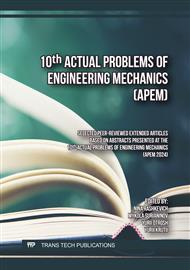p.109
p.117
p.127
p.139
p.153
p.165
p.173
p.181
p.191
BIM Technologies in Ukraine: State and Development Prospects
Abstract:
The work is devoted to the state and prospects for the development of BIM technologies in Ukraine. A review and analysis of domestic and foreign publications on the problem under study was carried out. The regulatory framework has been analyzed. It is argued that many problems of introducing building information modeling in the construction industry of foreign countries and, especially, Ukraine still require solutions. Several groups of specific problems associated with the implementation of BIM technologies are considered: in terms of design; in terms of construction; in terms of operation. The main activities for the successful implementation of BIM technologies in Ukraine are highlighted: combining best practices for the formation of regulations for BIM processes, taking into account international experience; a single data exchange unit for CAD integration and state coordination of this exchange; revision of existing budget standards; additional development of new cost estimates that take into account new technologies, new materials, machines and mechanisms; a unified coding system for enlarged units and structural elements of buildings in CAD systems with reference to estimate standards; unified classification of resources and services for construction in accordance with BIM technologies and harmonization with international standards; creation and maintenance of a database of regional prices for material resources; a unified open data format for transferring an information model of an object at different stages of design, construction, and operation into various software products; mandatory regulatory and financial support from the state.
Info:
Periodical:
Pages:
173-179
Citation:
Online since:
December 2024
Price:
Сopyright:
© 2024 Trans Tech Publications Ltd. All Rights Reserved
Share:
Citation:



